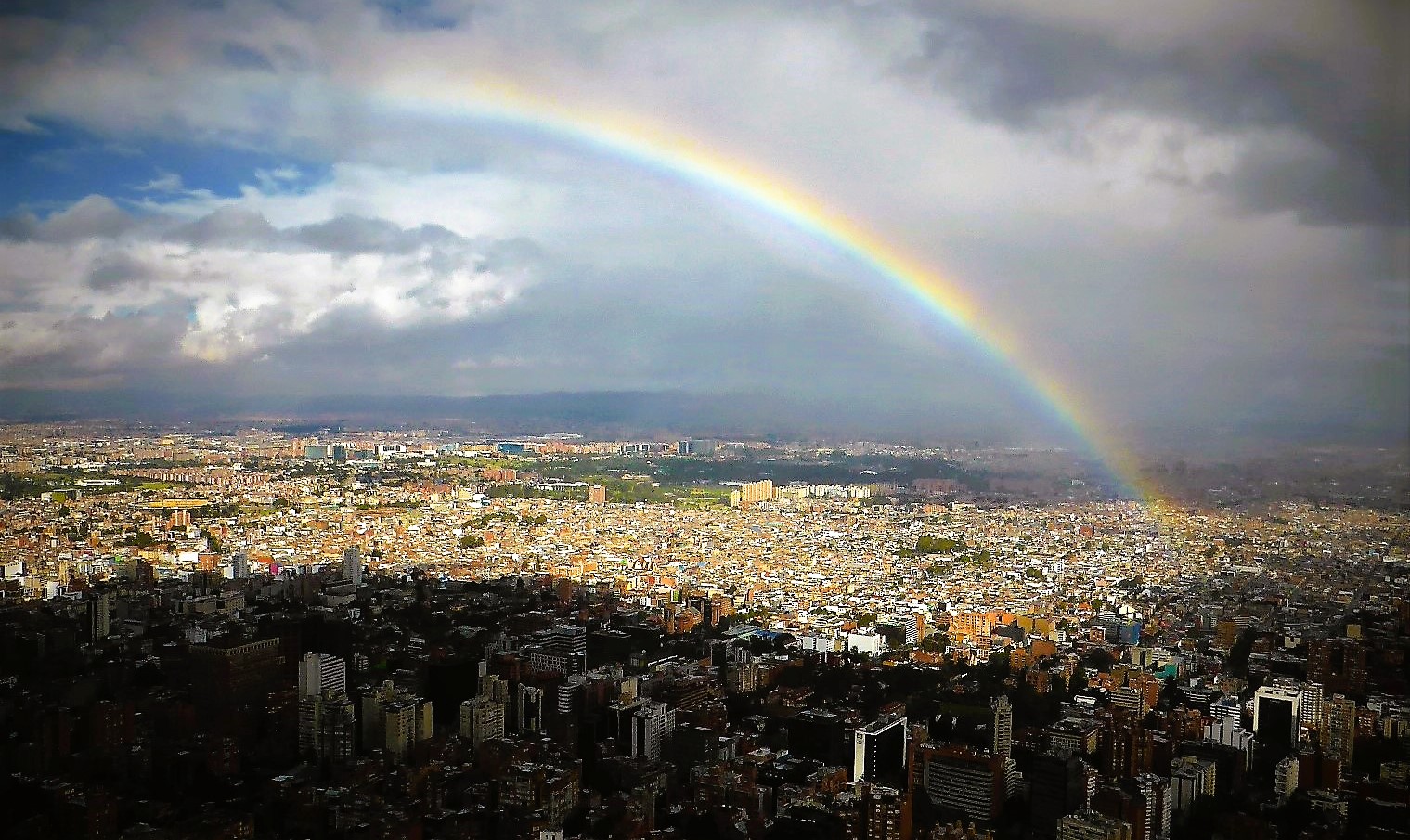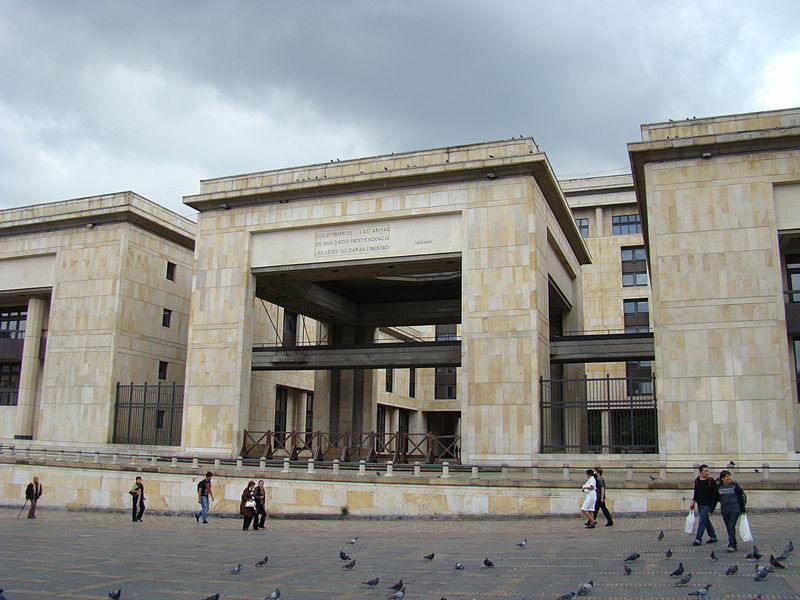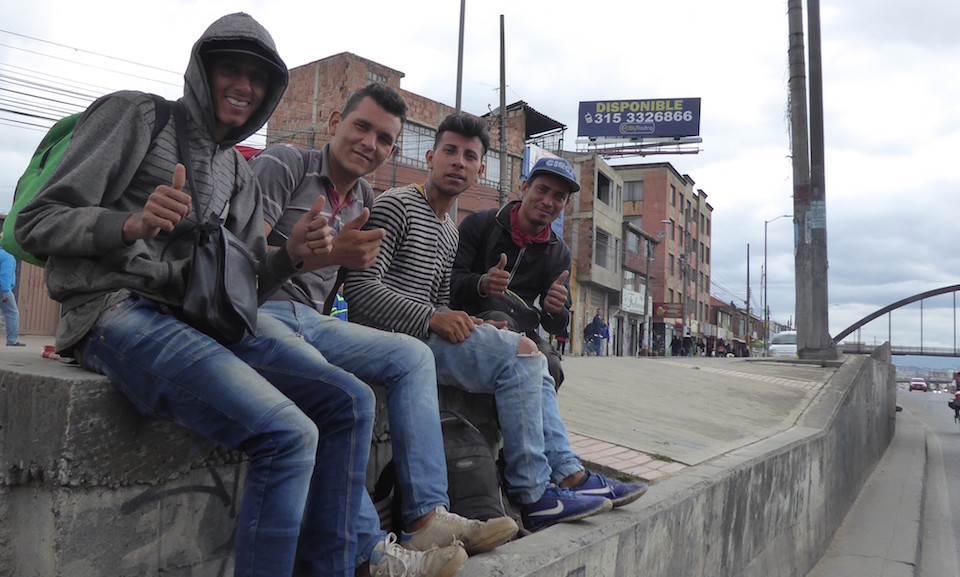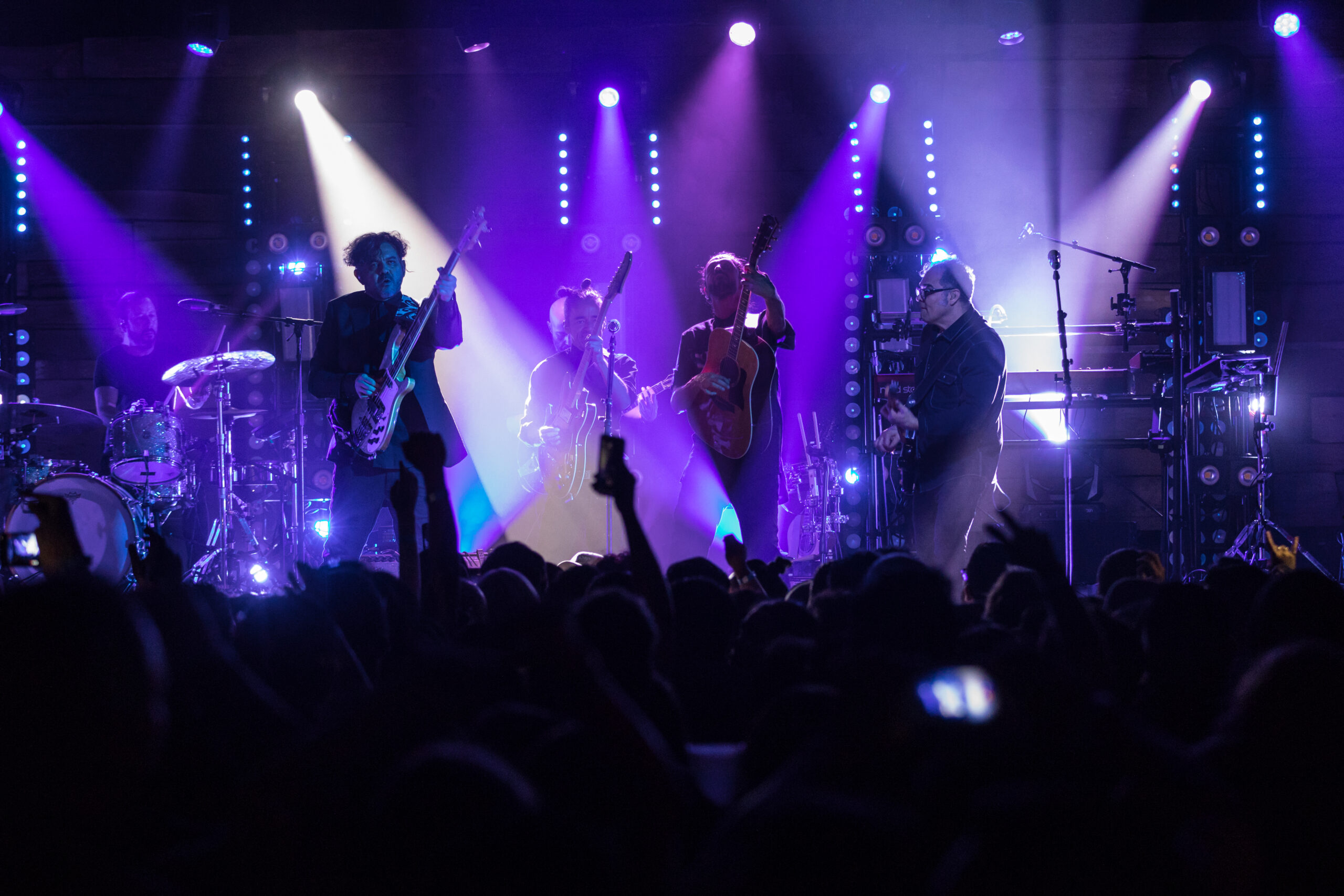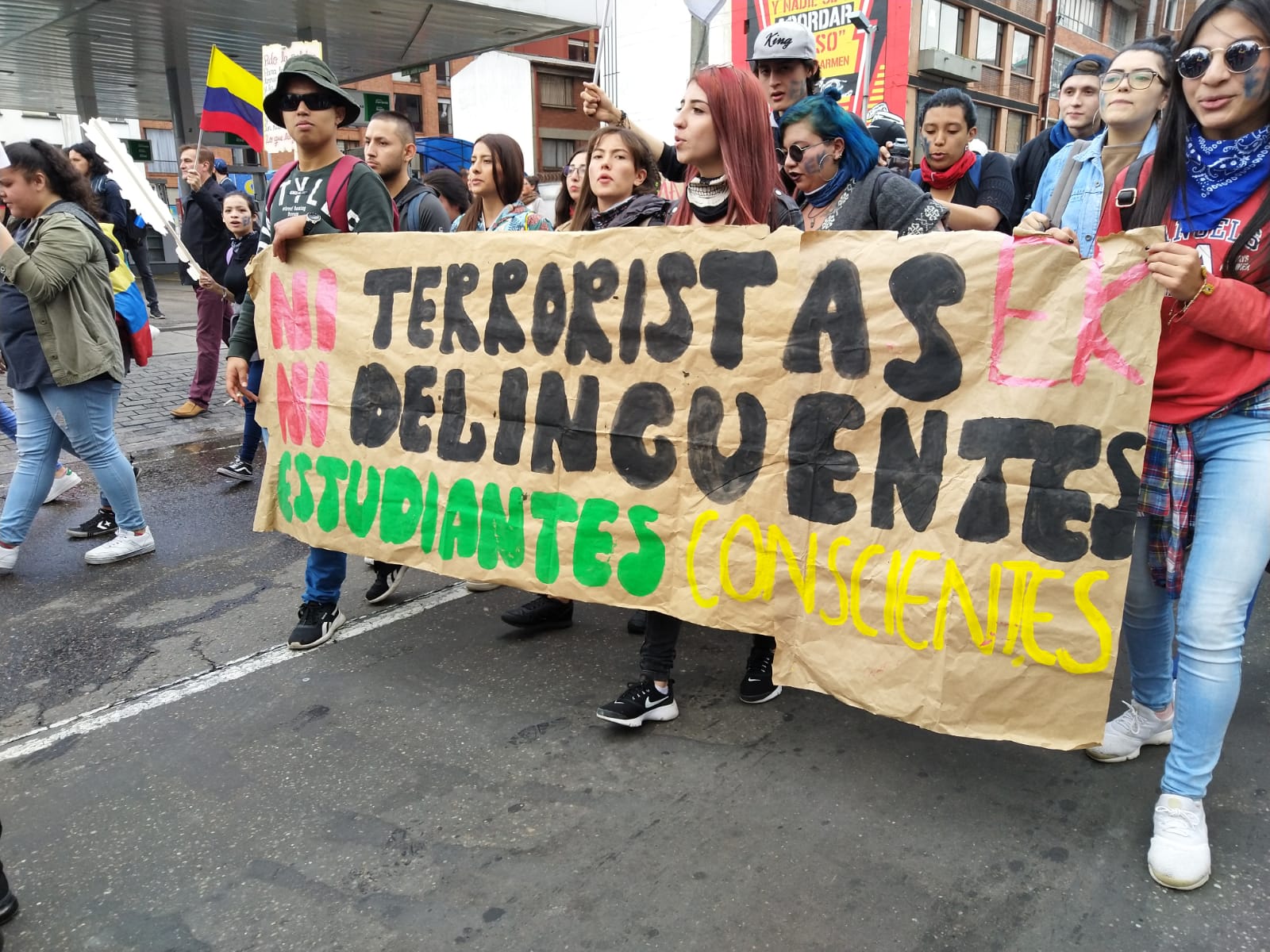Fans face long waits, high costs, and an increasing rate of rejections for their dream trip to the 2026 World Cup.
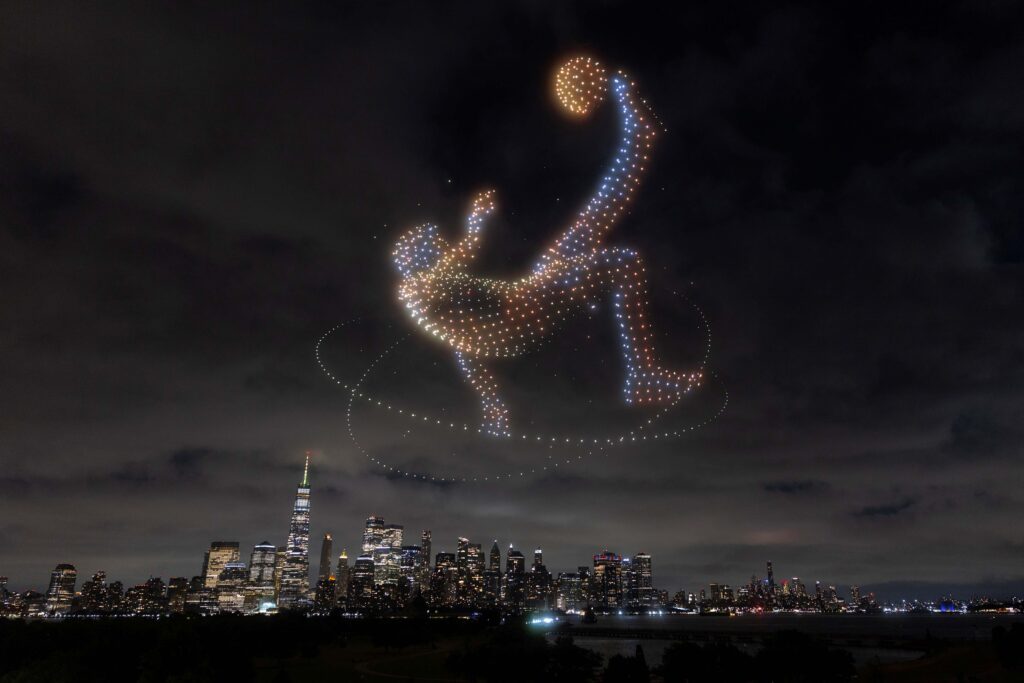
Bogotá, Colombia – In the kitchen, just back from their visa interview at the U.S. embassy, Don Ernesto and Doña Angela are looking glum. “Why the sad faces?” I ask.
“Nos rechazaron. Sin palabras,” replies Ernesto. They rejected us. With no explanation.
I notice Angela has been crying. Their dream to go to the 2026 soccer World Cup – plus a sidetrip with the grandkids to Disneyland – is now in tatters.
“Oh well. If they don’t want us, there’s nothing to do,” says Angela. She puts on a smile.
They are proud folk, and hardworking, raising two generations in a mining town in Antioquia, used to hardship and tragedy, working all hours to get ahead through a restaurant and a shop, eventually buying a small farm.
Read more: Does Colombia face a passport drought?
The family waited 15 months for an interview slot, spent $700 USD on fees – non refundable – and flew to Bogotá for the biometric testing and two-minute interview in which, in the same short timeframe, they were told their tourist visas were rejected.
The gut punch is the “sin palabras”, says Angela. “At least they could have told us why we can’t go.”
Less waiting but fewer visas
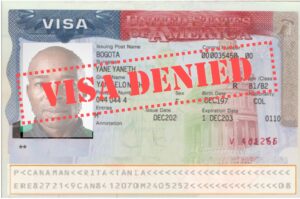
Ernesto and Angela are not alone: according to a recent report from a consortium of two commercial visa companies, Visas Gómez & Asociados and Easyvisas, publicized in El Tiempo, the U.S. Embassy in Colombia has rejected more than 106,000 visas out of 342,000 applications processed in the first six months of 2025, which is 31 per cent.
This suggests a trend towards higher rejection rates with the current Washington administration, which peaked at 42 per cent during President Donald Trump’s previous tenure in 2019, according to data from the Visa Refusal website.
What has improved – slightly – is visitor visa waiting times, according to the Visas Gómez & Asociados and Easyvisas report, after an increase in consular staff at the embassy.
In recent years Colombian applicants have had to wait 24 months for an interview at the U.S. embassy in Bogotá. This week the U.S. state department was reporting a 12-month wait.
While an improvement, it could be too late for Colombian fans still undecided on whether to try and visit the U.S. for the 2026 soccer World Cup, where most of the matches and the final will be held in June and July next year (Mexico and Canada will also host some games).
Mixed messages
Colombia has yet to qualify for the tournament but is likely to make the cut.
Equally undecided is if the U.S. will further ramp up capacity to process visas. According to Reuters, Secretary of State Marco Rubio announced in May that consulates would work “double shifts” and employ AI to speed the process ahead of the 2026 tournament.
But in a later comment, reported in Newsweek, he warned: “If you haven’t applied already, you probably won’t get here”.
These mixed messages come even as the Trump administration has announced wider cost-cutting proposals to scale down embassies and consular services, and an executive order from the White House in June banning visitors from 12 countries.
These include Haiti, still to qualify, and Iran, which has already qualified but whose citizens will now have to stay home.
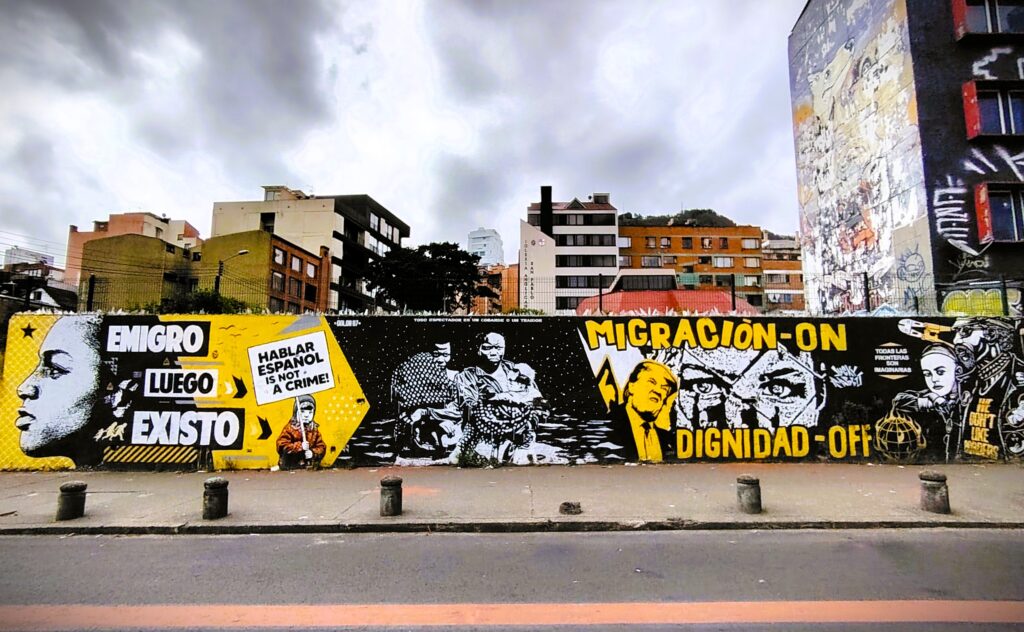
A small window to fix things…
These restrictions have been ringing alarm bells in the U.S. travel industry.
Visa hurdles were the “single biggest deterrent to visiting the United States,” U.S. Travel Association president Geoff Freeman told ESPN back in February.
Then, the association issued a report identifying “urgent steps needed to ensure the U.S. can deliver a golden age of travel” ahead of an “historic epoch” with the country hosting the World Cup, America’s 250th anniversary on July 4, 2026, and the 2028 Olympic and Paralympic Games in Los Angeles.
Among the report’s recommendations were increased consular staff, more resources for traveler vetting, faster border checks, and extended the validity of existing visitor visas.
Washington had “a small window to fix major travel pain points and unlock a $100 billion economic opportunity”, said Freeman.
“People want to come, but they’re not coming. It gets down to those visa wait times. It gets down to the customs inefficiencies. It gets down to a perception in some instances that people aren’t welcome. We’re very concerned,” said Freeman.
That feeling of rejection is resonating on social media in Colombia, with many people posting the ups and downs of their visa process.
One example gaining traction this week has been Camila Correa’s saga of seven failed attempts, even though she claims to tick all the boxes for a visitor visa: economically stable, property owner, and with a history of overseas travel.
Overstaying their welcome
Perhaps less visible are the Colombians overstaying their visitor visas.
U.S. department of homeland security data from 2023 showed that out of the 945,000 Colombians visiting that year, some 40,900 overstayed, accounting for 4.33%.
Other countries in the region have a higher percentage of overstayers, but less overall numbers. See the table below for a regional comparison.
The data also suggests that Colombia is currently favored in terms of visa approvals compared to other countries in the region, with applicants in El Salvador, Honduras, Venezuela, Ecuador and Bolivia all having a higher rejection rate but with fewer overstayers.
That might change with political clouds on the horizon, for example if the U.S. decides to punish Colombia with a fully-fledged drug decertification later in 2026, seemingly increasingly likely given the current cocaine boom.
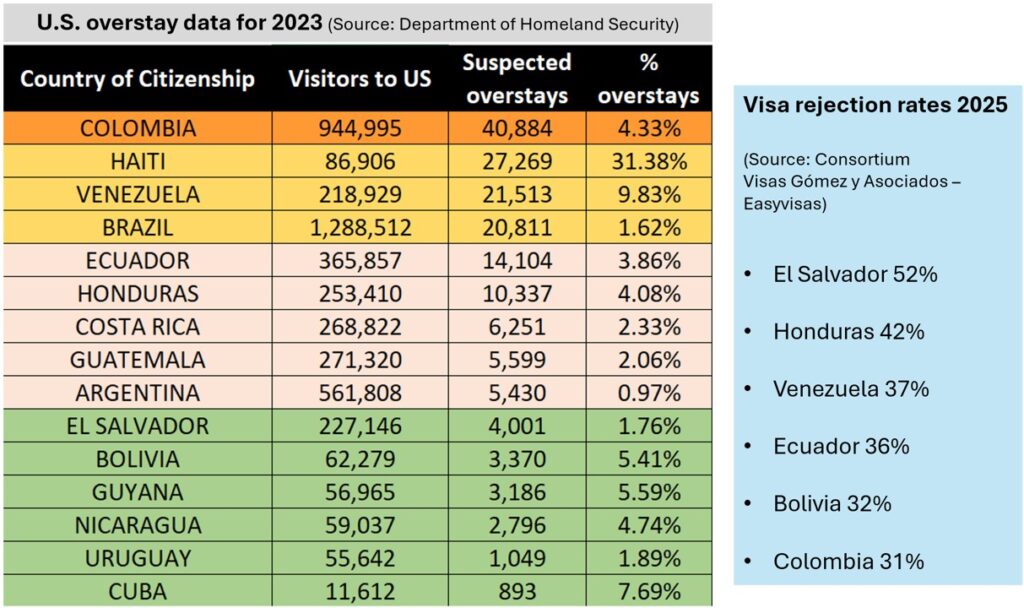
The not so beautiful bill
Meanwhile Trump’s recently-passed One Big Beautiful Bill Act (OBBBA) has focused more on restricting access rather than facilitating visitors to the U.S.
The American Immigration Council has calculated $170.7 billion USD in additional funding for immigration and border enforcement, including $51.6 billion USD for a bigger wall with Mexico.
In terms of visas, the OBBBA will implement – it’s unclear when – a further $250 USD “integration fee” on top of the existing application payment that will bring the upfront cost of a visitor visa to $435 USD. In theory, some of the money can be reclaimed when the visitor leaves the U.S. But then, there are costs for that process too.
Not everyone will be put off. Throughout 2023, the U.S. Embassy in Bogotá issued 364,000 tourist visas, roughly 30,000 a month. Perhaps that just makes it more heartbreaking for the 31% left behind.
Such as our friends, Angela and Ernesto. For now, they have no plans to apply again this year. And the money they saved for the once-in-a-lifetime trip to the World Cup?
Ernesto grins. “We’ll spend it on a bigger TV.”

